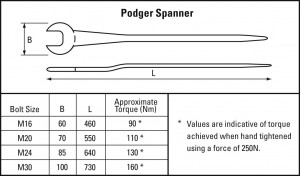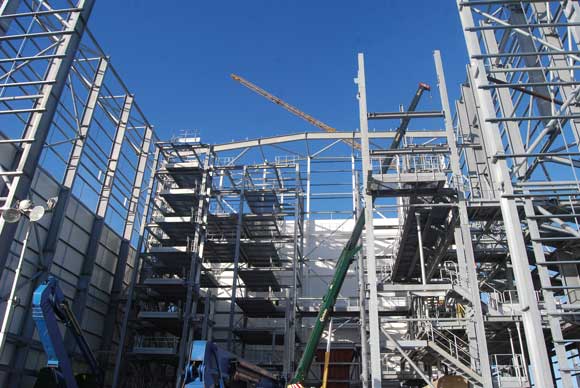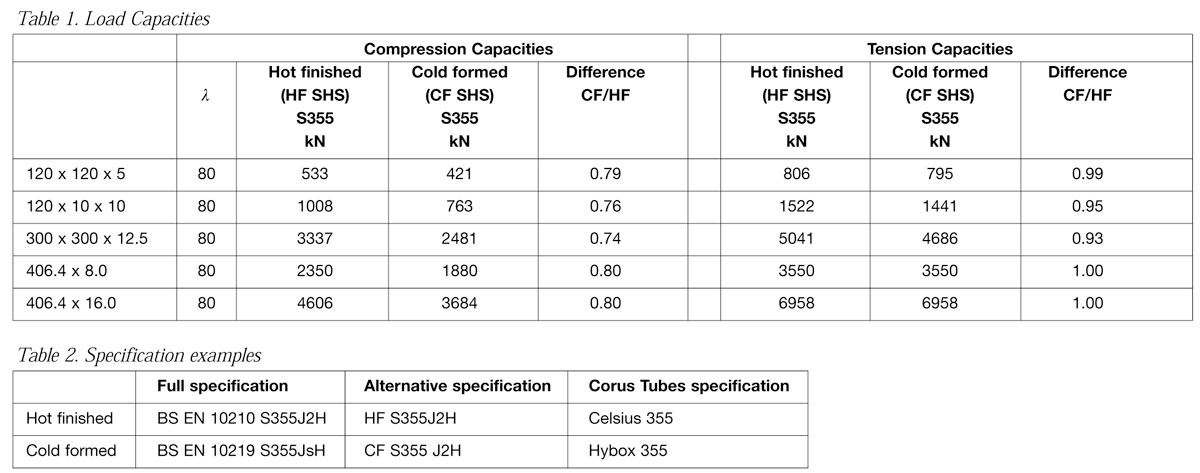Technical
AD 302: Tightening of Ordinary Bolts.
The advisory service regularly receives requests for a set of torque values in connection with the installation of ordinary bolts. This usually arises because a criterion is required for the project QA procedures in order to ensure that ordinary bolts are ‘correctly tightened’.
Section 6.1 in the National Specification for Structural Steelwork for Building Construction 4th edition (NSSS) deals with the installation of ordinary bolted assemblies and clause 6.1.8 states that ‘Bolts may be assembled using power tools or shall be fully tightened by hand using appropriate spanners in accordance with BS 2583’. It should be noted that BS 2583 is a spanner standard and does not deal with tightening procedures or torque values.
Traditional British practice has been to hand tighten ordinary bolts using podger spanners. That is, when an average erector fully tightens an ordinary bolt using a podger spanner the bolt is correctly tightened. There is no specified minimum torque values required and this is all that is necessary to ensure that the nut does not come loose in steelwork used in building construction. The commentary on the NSSS 4th edition states ‘The intention of 6.1.8. on bolt tightening of ordinary bolts is that the bolts are at least ‘spanner tight’ whether they be assembled using impact tools or hand spanners to BS 2583’.
The following table appears in the Commentary to the NSSS 4th edition as well as in two of the green book series on Joints in Steel Construction; Simple Connections P 212 and Moment Connections P 207. The torque values given in the table are simply an equivalent to hand tightening using a podger spanner.
 The SCI recommends that generally, torque on ordinary bolts need not be checked. If torque values are required, then the values shown in the above table may be used. Verification should take place after the installation of all the bolts in a joint at the steel erection stage. It is acceptable to retighten bolts which become loose due to the subsequent tightening of the other bolts in the joint. However, it is not necessary to retighten or verify the bolts in a joint following the erection of other members, or tightening of the bolts in other joints in the structure. Likewise, it is not required to check the bolts in joints following subsequent erection operations; pouring of concrete or erection of cladding for example. These torque values are irrespective of the bolt grade used and in no way imply that installation by power tools is to be preferred to hand tightening using a podger spanner.
The SCI recommends that generally, torque on ordinary bolts need not be checked. If torque values are required, then the values shown in the above table may be used. Verification should take place after the installation of all the bolts in a joint at the steel erection stage. It is acceptable to retighten bolts which become loose due to the subsequent tightening of the other bolts in the joint. However, it is not necessary to retighten or verify the bolts in a joint following the erection of other members, or tightening of the bolts in other joints in the structure. Likewise, it is not required to check the bolts in joints following subsequent erection operations; pouring of concrete or erection of cladding for example. These torque values are irrespective of the bolt grade used and in no way imply that installation by power tools is to be preferred to hand tightening using a podger spanner.
Ordinary bolts particularly those specified to BS 4190, should not be torqued to the values used for preloaded (HSFG) bolts because they have thinner nuts than preloaded bolts. The risk of thread stripping exists if these higher torque values are applied.











